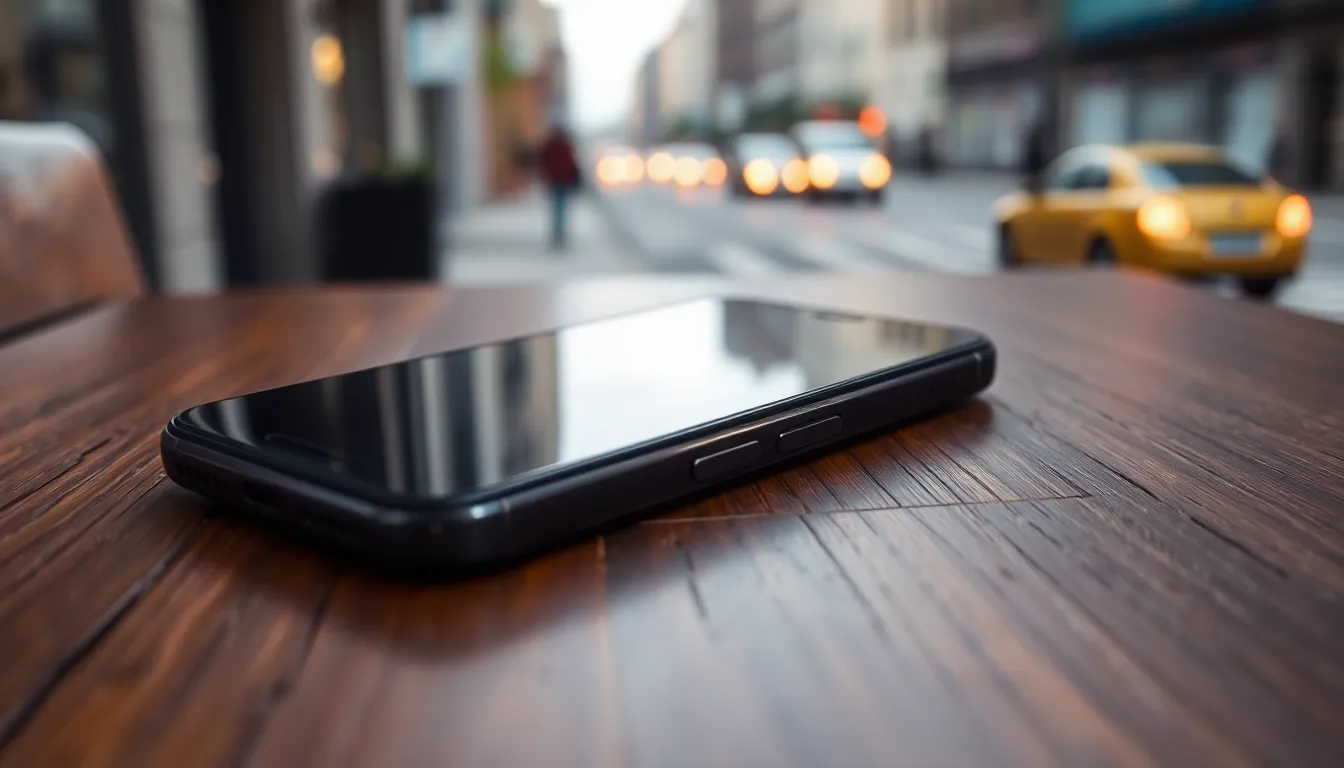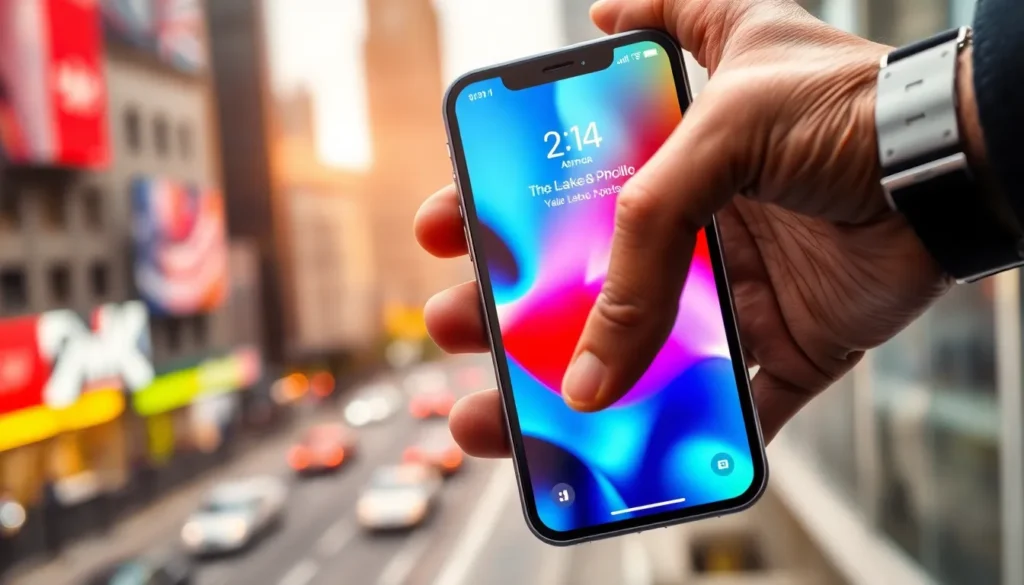Table of Contents
ToggleImagine this: a thief snatches your iPhone, and you’re left wondering if they can crack the code to your digital life. It’s a scenario straight out of a heist movie, but it’s a real concern for many. With all the personal data stored on these devices, the stakes are high.
Understanding iPhone Security
iPhones feature robust security measures designed to protect users’ personal information. Several layers of defense ensure that even if a device is stolen, accessing data remains a significant challenge.
What Makes iPhones Secure?
Advanced encryption technology secures user data on iPhones. Each device generates a unique cryptographic key that protects content. Face ID and Touch ID provide biometric authentication, adding an extra layer of security. Continuous software updates enhance safety by addressing vulnerabilities. Additionally, features like Find My iPhone enable users to track, lock, or erase their device remotely, ensuring stolen phones are less valuable to thieves.
Common Myths About iPhone Theft
Many believe that thieves can easily unlock iPhones. In reality, most stolen iPhones remain inaccessible due to strong security measures. Another common myth suggests that resetting a stolen iPhone bypasses its security protocols. Even after a reset, the activation lock remains, requiring the original owner’s credentials. Some also think physical damage allows access, but hardware and software integration complicates unauthorized entry. These misconceptions often lead to unnecessary fear rather than understanding actual security strengths.
Can a Thief Unlock My iPhone?

The strong security features of iPhones significantly reduce the chances of unauthorized access by thieves. Advanced technology protects personal data stored on these devices.
Methods of Bypassing Security
Some methods exist for attempting to bypass iPhone security, though they often fail. Thieves may use specialized software that claims to unlock devices, but success rates remain low. Alternative methods, like exploiting system vulnerabilities, occur but require advanced skills and are generally patched quickly by Apple. Tools that involve brute force attacks may seem effective, yet iPhones limit repeated attempts, making this approach impractical. Notably, bypassing security measures usually leads to additional complications, reinforcing why iPhones maintain strong defenses.
Limitations of Unlocking Attempts
Unlocking attempts come with strict limitations designed to deter unauthorized access. After several failed attempts, iPhones disable further access temporarily, requiring a waiting period before trying again. Newer models increase security by integrating features that erase data after multiple incorrect passcodes. Remote tracking options enable users to locate lost iPhones, adding an extra layer of protection. Thieves face significant hurdles when attempting to reset or access locked iPhones, maintaining a high level of security for users’ information.
Preventative Measures
Taking steps to enhance iPhone security can effectively reduce the risk of unauthorized access by thieves. Several methods provide added protection for personal data.
Enabling Face ID and Touch ID
Enabling Face ID or Touch ID serves as a primary defense against unauthorized access. These biometric authentication methods utilize unique facial features or fingerprints, making it difficult for anyone else to unlock the device. Users should activate these features in the iPhone settings, ensuring their personal information remains secure. Additionally, setting up these options requires the user’s biometric data, creating a barrier against potential intruders. This added layer of security significantly enhances protection, as thieves cannot replicate biometric traits.
Importance of Strong Passcodes
Choosing a strong passcode is vital for iPhone security. A complex passcode includes a combination of numbers, letters, and special characters, making it harder for thieves to guess. Users should avoid predictable patterns, such as birthdays or sequential numbers. Enforcing a longer passcode, ideally six digits or more, reduces the chance of unauthorized access. Enabling features like “Erase Data” after multiple failed attempts further protects sensitive information. Opting for a strong passcode maintains a critical defense against theft and ensures protection of personal data stored on the device.
What to Do If Your iPhone Is Stolen
Taking immediate action after an iPhone theft is crucial for protecting personal information. Users can follow these steps to ensure their data remains secure.
Immediate Steps to Take
Act swiftly to minimize potential risks. First, use the Find My iPhone feature to locate the device. This app allows users to track the phone’s location on a map. If the device is nearby, play a sound to help locate it. If tracking fails, remotely lock the device to prevent unauthorized access. Enabling Lost Mode provides another layer of security by displaying a custom message on the lock screen. Finally, consider erasing all data remotely if retrieval seems impossible. This action safeguards sensitive information, ensuring the thief cannot access personal data.
Reporting the Theft
Reporting the theft to local law enforcement is vital. Provide the police with relevant details, such as the device’s model, serial number, and location where it was stolen. A police report can assist in tracking the device, and it may be required for insurance claims. Additionally, users should contact their carrier to report the theft. Carriers can disable the device, preventing calls and data usage on the stolen phone. This proactive measure helps protect against identity theft and additional charges incurred by the thief.
The security features of iPhones provide a formidable barrier against unauthorized access, even in the hands of a determined thief. With advanced encryption, biometric authentication, and remote management tools, users can feel more secure knowing their personal information is well-protected. While no system is entirely foolproof, the combination of robust security measures and proactive user actions significantly reduces the risk of data breaches. By understanding these protections and taking immediate steps if theft occurs, users can safeguard their sensitive information and maintain control over their devices. Ultimately, iPhone security is designed to keep personal data safe, ensuring peace of mind for its users.







